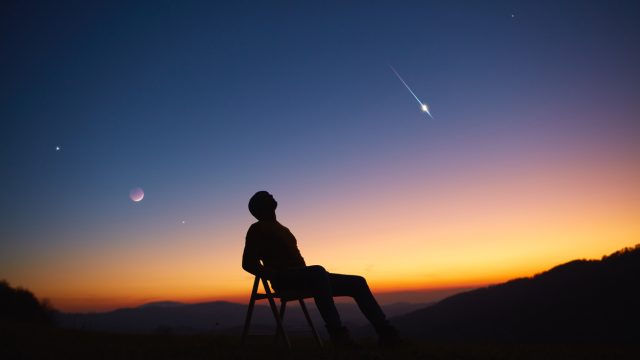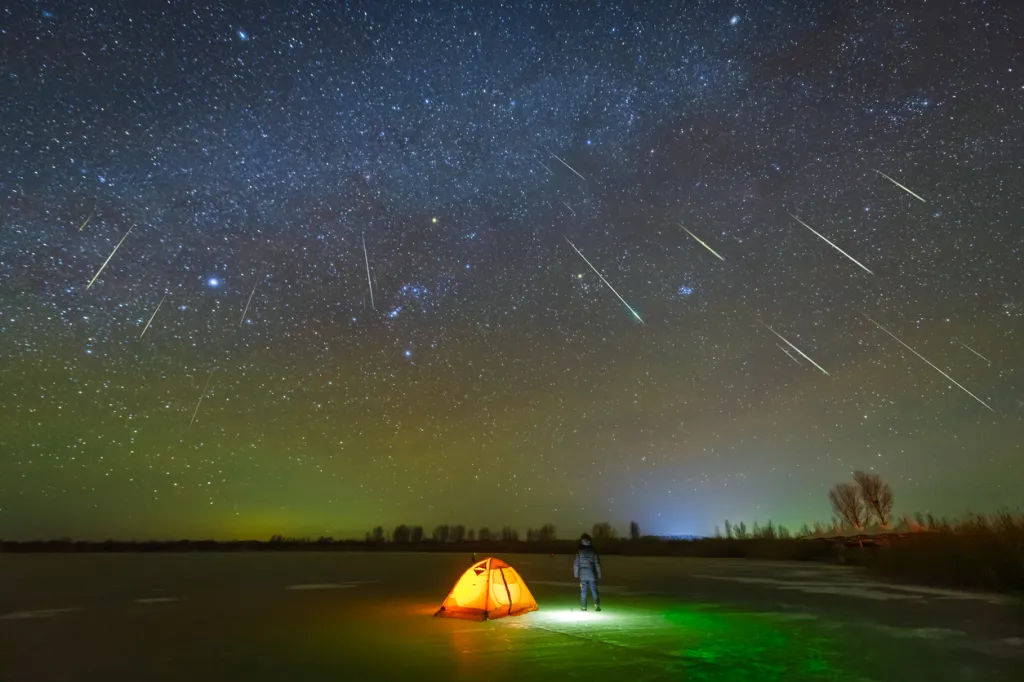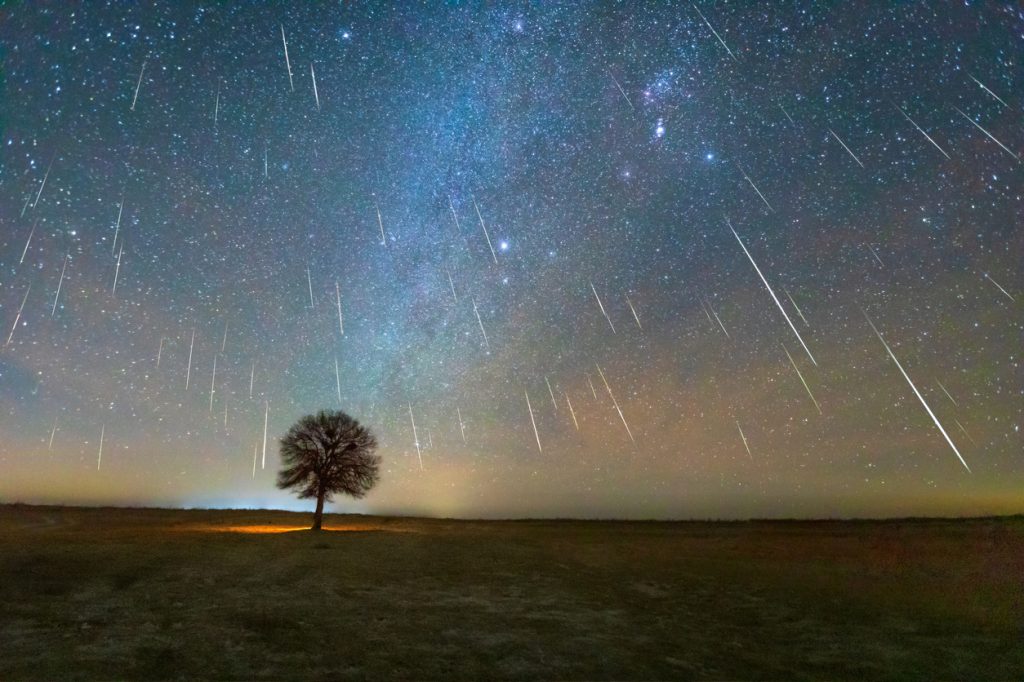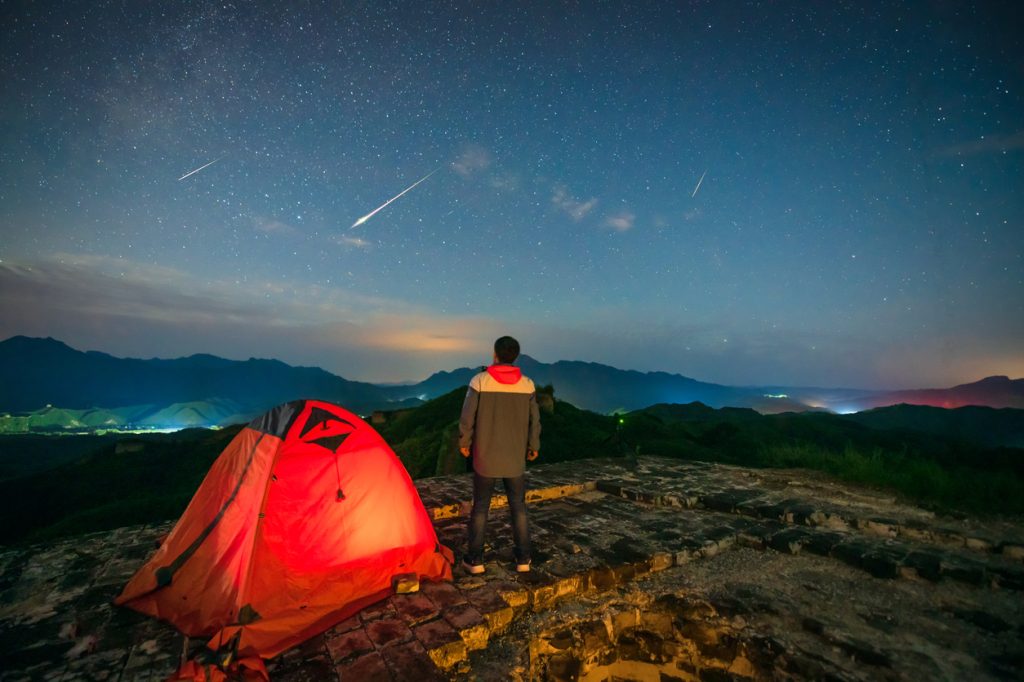“Overlooked” Last Meteor Shower of the Year Can Be Seen With the Naked Eye This Weekend

While the colder months might not feel like the best time for stargazing, there’s plenty worth braving the cold to see. The night sky is still a busy place, from special planetary alignments to bright full moons and even super rare events. And now, you can catch the last meteor shower of the year when the Ursids peak this weekend. Read on to learn about this “overlooked” annual spectacle and how you can see it for yourself.
RELATED: The Next Total Solar Eclipse Will Be the Last Until 2044, NASA Says.
The Ursid meteor shower is the last major stargazing event of the year—even if it’s often “overlooked.”

Even after a year of memorable celestial events, 2023 isn’t finished quite yet. This week brings about the Ursid meteor shower, marking the last such event of the year, according to astronomy website EarthSky.
Despite being an annual occurrence, the Ursids are often “overlooked” because they fall during the peak of the busy holiday season. They’re also often overshadowed by the Geminid meteor shower, which peaked on Dec. 13 and will be trailing off in the night sky through Dec. 24, per EarthSky.
The Ursids are caused by the dust trail left behind by the comet 8P/Tuttle. The celestial object travels as close to the sun as Earth’s orbit out to as far as Saturn’s orbit on a 13.7-year cycle. According to EarthSky, the shower itself gets its name for its radiant point in the Ursa Minor constellation, more commonly known as the Little Dipper.
RELATED: “Devil Comet” With Horns Is Racing Toward Us—Here’s When and Where It Arrives.
The December spectacle isn’t always as active as other meteor showers.

Besides often having their thunder stolen by the Geminids each year, the Ursids are often less hyped due to their lower activity levels. According to EarthSky, stargazers can expect to see five to 10 meteors per hour—which is far fewer than the 120 or more that are average for the other December spectacle.
But despite their average track record, they’re not always forced into the background. There are several notable examples throughout the 20th century of sudden outbursts making the Ursids a much more notable affair, including one in 1945 that brought about roughly 100 meteors per hour and another in 1973 that saw an average of 30 per hour.
RELATED: 8 Amazing Things You Can See in the Night Sky Without a Telescope.
This year, the Ursids could be more difficult to spot due to moon conditions.

The Ursids technically kicked off around Dec. 13 and are already visible in the sky. However, they’ll be picking up steam throughout the week before reaching their peak in the early morning hours of Dec. 23, according to EarthSky. The “shooting stars” should remain visible in the sky as they trail out through Dec. 27.
Unfortunately, conditions might make them somewhat more difficult to see this year. That’s because a first-quarter moon is expected to rise on Dec. 19, bringing an 86 percent illuminated disc into the sky that could drown out all but the brightest meteors. But those who plan on staying up late might be able to avoid the issue altogether, as the moon will set three hours before sunrise.
Being able to catch the meteor shower could also come down to where you live. Because of their position in the night sky, the Ursids are almost entirely limited to viewers in the Northern Hemisphere.
RELATED: Scientists Finally Explain Mysterious Signals From Distant “Hell” Planet.
Here’s how you can best prepare to watch the meteor shower this weekend.

If you’re planning on getting one last meteor shower in for the year, there are a few essential tips to keep in mind to improve your chances of catching a good show. According to EarthSky, try to find a viewing location that’s far from the light pollution of cities and towns.
Due to the chilly December nighttime temperatures, it’s also best to dress comfortably and bring a warm blanket or sleeping bag to stay cozy. Since the Geminids are still phasing out, you might be able to catch a crossover effect and see even more meteors if you spend enough time outdoors. And while the Ursids will be visible all night due to the high radiant point in the sky, setting your alarm to view them in the pre-dawn hours after the moon has set could offer the best conditions, per EarthSky.
RELATED: For more up-to-date information, sign up for our daily newsletter.